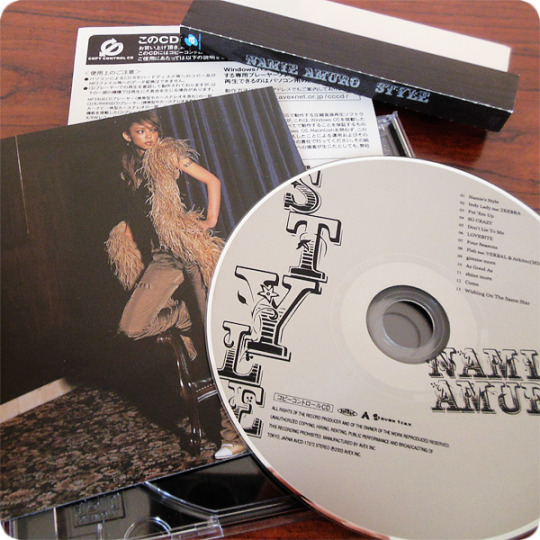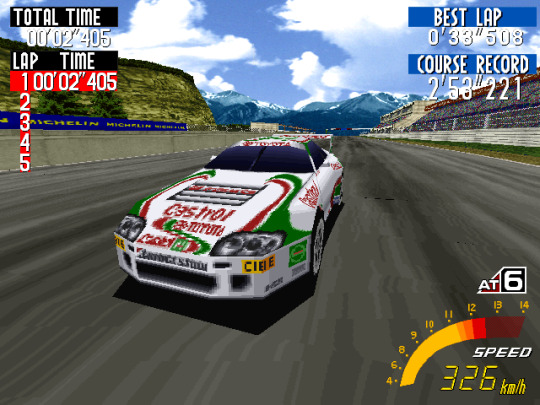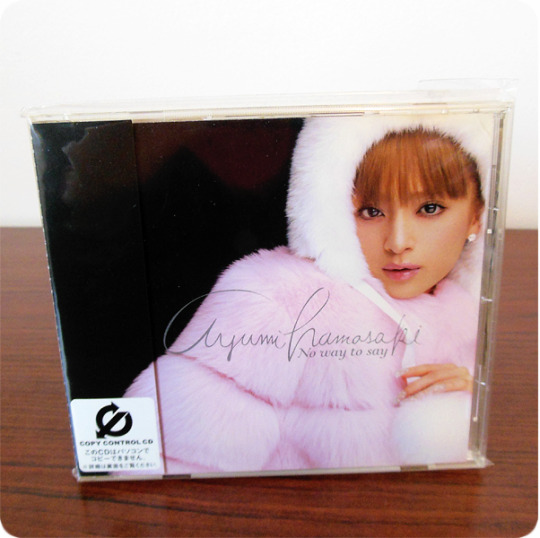#avex trax
Explore tagged Tumblr posts
Text

avex エイベックス 安西ひろこ「True Love」 (2000)
299 notes
·
View notes
Text




Hitomi - Self Portrait
31 notes
·
View notes
Text









Favourite female artists 👢Namie Amuro (19/20)
#ffa#favourite female artists#namie amuro#amuro namie#ffa edit#hst edit#avex trax#neonlight lipstick#big boys cry#love 2000#Something 'Bout the Kiss#can't eat can't sleep im sick#violet sauce#the speed star#funky town#wowa#pink key#jpop#jr&b#k.u.n.a.#安室奈美恵#k.u.n.a
14 notes
·
View notes
Text

I traced over a-chan with popo and now @starshinesarahjones is gonna file a lawsuit against me
#a chan#channel a#avex trax#jollibee#jollitown#jollibee's#jolly#popo jollibee#popo#popo potato#jollibee popo
8 notes
·
View notes
Text
Red Velvet - WILDSIDE (Bloom, 2022)
3 notes
·
View notes
Text

20th Anniversary
Namie Amuro: Style (2003.12.10)
There are at least four distinct eras in Namie Amuro's career: 1) her initial debut with the idol-ish super eurobeat/dance group SUPER MONKEY'S (which spawned the group MAX) from 1992 to 1995, 2) her major debut as a solo artist with Avex Trax in 1995, kicked off by the single "Body Feels EXIT," through to the height of her popularity as a leading figure in the J-pop industry alongside producer Tetsuya Komuro until her abrupt hiatus in 1997, 3) the awkward, not-very-well-received comeback and transition to post-TK R&B, which saw the lowest sales numbers of her career, and lasted roughly until the release of Queen of Hip-Pop in 2005, and 4) her meteoric rebound, transition back to dance-pop, and the cementing of her status as a legend, until the abrupt announcement of her retirement in 2017. There are a lot of mini-moments within these eras, and many parts overlap so that it's not exactly seamless, but that's the gist of it.
While Namie's comeback was one of the rarest in music history, the factors that led to the initial nadir are just as interesting and numerous. For one, she had squandered the goodwill of the public by engaging in activity that was frowned upon in Japan at the time: she hooked up with a backup dancer, got pregnant, got married, got tattoos, and got divorced, all within the space of a couple of years. On top of it, Namie's success was tied to that of her producer, the mega-popular and prolific Tetsuya Komuro, who was basically running a personal empire in the 1990s. While Namie's popularity and success was never due solely to the music he was writing for her, it was an enormous contributing factor to her sales numbers. TK's brand of pop was the defining style of the 90s, with no one better able to pry open wallets in what was the CD format's most lucrative era. But just as quickly and completely as he ruled hearts and charts, his music fell out of style, also as a result of several factors (mostly the rise of singer-songwriters and R&B/hip-hop in the mainstream, and personal issues involving everything from tax evasion, to drug rumors and a wild romantic life). Namie teaming up with him again for her immediate comeback never stood a chance against so much drama. So major changes were made when Namie ditched the Komuro baggage, taking the plunge with new support -- Dallas Austin, m-flo, ZEEBRA, even Teddy Riley -- into the world of R&B and hip-hop.
This brave step didn't immediately produce amazing results: if anything, Namie's early forays proved lackluster and indecisive on albums like GENIUS 2000. It wasn't until 2003's STYLE that she finally and fully committed to the change. Gone were the days of chasing the chance and dreaming that she was dreaming, Namie was now putting up her dukes, wishing on the same star, and shining more. The songs on the album were all heavily influenced by contemporary Western trends of the time, especially Black hip-hop, fashion, and culture. The early 00s was still the era of P. Diddy, Jennifer Lopez, Nelly, Busta Rhymes and Missy Elliott, and in some ways, STYLE samples sounds from all of these artists in different ways, with the inclusion of a few softer songs, such as "Four Seasons," "As Good As," and "Come," which were deliberately added for variety. But for the most part, the album is built on beats, bars, and rhymes. This was still a fairly new thing to see in the Japanese mainstream, and certainly by an Avex Trax artist -- for comparison, Ayumi Hamasaki had just released her rock opus I am..., while RAINBOW merely dipped a toe into R&B on a song like "Real me," Ai Otsuka was less than a year out from releasing LOVE PUNCH, Hikaru Utada was actually going softer and more art-pop with Deep River, and both BoA and Kumi Koda had just debuted in Japan with LISTEN TO MY HEART and affection respectively, which stayed squarely on the softer R&B/pop side of the fence. Only Crystal Kay, HEARTSDALES, and maybe DOUBLE were a step ahead of Namie, but I would argue that STYLE and Namie's involvement in projects like SUITE CHIC really let the sound transition into the broader and bigger Oricon mainstream, prompting a rash of copycat records.
Even so, STYLE did poorly. It still hit #1 in its first week, but it stands as Namie's least popular record with the fewest sales numbers to this day. It does, however, have something of a cult following by fans who now look back at the early 00s with nostalgia. Personally, I didn't like this album when I first heard it -- its lack of pop and dance music, which I was used to hearing from Namie, coupled with what seemed like a desperate bid for relevancy in a genre that I wasn't particularly interested in at the time, turned me off from spending much time with it. Nowadays, I dislike this album less -- there are songs on here that I actually really like. My only real caveat is that the album is split too abruptly at the halfway point between the bangers and the non-hip-hop tracks. In hindsight, STYLE is clearly Namie still getting comfortable in this milieu, and it's especially obvious next to albums like Queen of Hip-Pop and PLAY that were more successful at capturing something both influenced by hip-hop and unique to what only Namie could bring.
This CD album comes in a standard jewel case with an OBI and a booklet that features additional photos and lyrics. First press editions featured two exclusive bonus tracks: a remix of "SO CRAZY," and an alternate version of "Wishing on the Same Star." For me, this album is more interesting for what lead to it, what it lead to, and what it said about the state of Namie Amuro and J-pop at the time. It's not great, but it's not nearly as bad as I remember it being. Avex Trax, of course, would politely disagree, largely ignoring it on the career-summarizing compilation album Finally (only "SO CRAZY" represents). After something as tentative and a bit try-hard as this, the world was not ready for what was coming down the pipe with Queen of Hip-Pop, making that era all the more wild and magical.
Catalog Number: AVCD-17372
18 notes
·
View notes
Text
youtube
夏木花(浅倉唯) / Riot in bloom(『仮面ライダージャンヌ&仮面ライダーアギレラ with ガールズリミックス』主題歌)
#hana natsuki#asakura yui#kamen rider aguilera#kamen rider revice#j-pop#japanese idol#avex trax#Youtube
3 notes
·
View notes
Text





Sega Touring Car Championship (PC 1998)
3 notes
·
View notes
Audio
MAX - Ride On Time (Melodic Remix)
Super Eurobeat Vol.100
1999
3 notes
·
View notes
Text
Toon Time Theater Prediction
Three girls have been separated at a young age and were adopted by three different families. All three girls share one thing in common: they happen to be fans of a specific idol singer and her music. The three girls go to a concert showing support for their favorite idol singer, hoping one day all of them would become idol singers just like her. Shortly after, they enroll in a music school, with their singing teacher being a key to their lives. The three girls study and uncover the secrets of themselves, their teacher, and the idol singer the three girls are fans of. This April, I will kiss Naruto goodbye as I prepare More One Night with another idol anime to join the likes of the KEY THE METAL IDOL reruns.
#toon time theater#toontimetheater#anime#more one night#moreonenight#mayumi iizuka#iizuka mayumi#atsuko enomoto#enomoto atsuko#maria yamamoto#yamamoto maria#mariko kouda#kouda mariko#takehito koyasu#koyasu takehito#kana ueda#ueda kana#adv films#sentai filmworks#sentai studios#kelli cousins#hilary haag#monica rial#avex trax#avex mode
0 notes
Text

Hitomi – Thermo Plastic
5 notes
·
View notes
Text

Aiden is here!
1 note
·
View note
Text

rumble roses original soundtrack > all other konami game soundtracks
0 notes
Text
SOOYOUNG - Unstoppable (Unstoppable, 2024)
2 notes
·
View notes
Text


20th Anniversary
Ayumi Hamasaki: No way to say (2003.11.06)
Japanese pop music is rich in seasonal songs: when spring rolls around, artists clamor to release their best new-beginnings tracks, like, say, Perfume's "ONE ROOM DISCO," a song about kids moving all their junk into tiny dorm rooms when the new school year starts. In the summer, everyone jumps into swimsuits and drops their best upbeat, high-energy, beach-weather jams, like Kumi Koda's "LALALALALA." And when the temperature drops, bringing cooler, crisp air, and the snow begins to fall, the inevitable deluge of ballads begins.
As the reigning J-pop queen of her time, Ayumi Hamasaki is no stranger to the practice, and released several of her own seasonal-appropriate hits, including a number of ballads and slower-tempo tracks in the wintertime, like "M," "Voyage," "CAROLS," "HEAVEN," and one of the first to be so obviously geared to the season, 2003's "No way to say." The single was composed by BOUNCEBACK, one of the songwriting teams Ayu had newly enlisted for many of the tracks off of the eventual Memorial address EP, and features soft acoustic guitars that crescendo into a nice, classic Ayu synth-ballad, similar to many of her slower songs released around the same time period, like those off of 2004's MY STORY. It's a really pretty song and has remained very likable despite its PV that features a creepy Santa Claus head.
The rest of the tracks, in keeping with the winter-ballad theme, feature acoustic, or "acoustic orchestra" versions of songs, except for one. Notably, we get one for the title track, and ones for the ballads "SEASONS," "Dearest," and "Voyage." Unfortunately, for one of the few times in Ayu's career, we get re-released tracks that had appeared previously on other albums, with the acoustic version of "SEASONS" being from 2001's ayu-mi-x III Acoustic Orchestra Version, and "Dearest" from 2002's ayu-mi-x 4 + selection Acoustic Orchestra. I can't imagine if you weren't already a huge fan of Ayu's acoustic orchestra line (or huge fan in general) that you wouldn't already own those albums, so re-hashing them is a definite missed opportunity that opts for empty filler. I can't remember if the "Voyage" one is also a re-hash, though I know it was later worked into a different acoustic version that can be found on 2013's A CLASSICAL, along with new versions of the other two. Finally, there is a rather forgettable house remix of "No way to say" to close things out. Ballads are notoriously rough territory for club remixes, and this one doesn't fare any better than the rest. Overall, this an A+ title track that's marred with some rather forgettable coupling tracks, and suffers from one of the cheapest tricks in the book by including old material.
Still, one thing to note is how great Ayu's voice still sounds at this stage. It doesn't surprise me that we don't get too much in the way of these stripped down, acoustic compilations as much anymore, since Ayu's voice doesn't sound as good as it once did, with her clean timbre and more restrained delivery. Finally, this includes the instrumental version of "No way to say," which is predictably terrific.
This is a very sweet, very classic Ayu ballad, one that she has performed dozens of times live for a good reason, usually in a cosmically large ballgown, and it does a good job of representing this period of her career. Ayu has released many winter, or winter-adjacent, ballads over the course of her legendary career, and this one still stands as one of the most well-known and beloved.
Catalog Number: AVCD-30542
8 notes
·
View notes